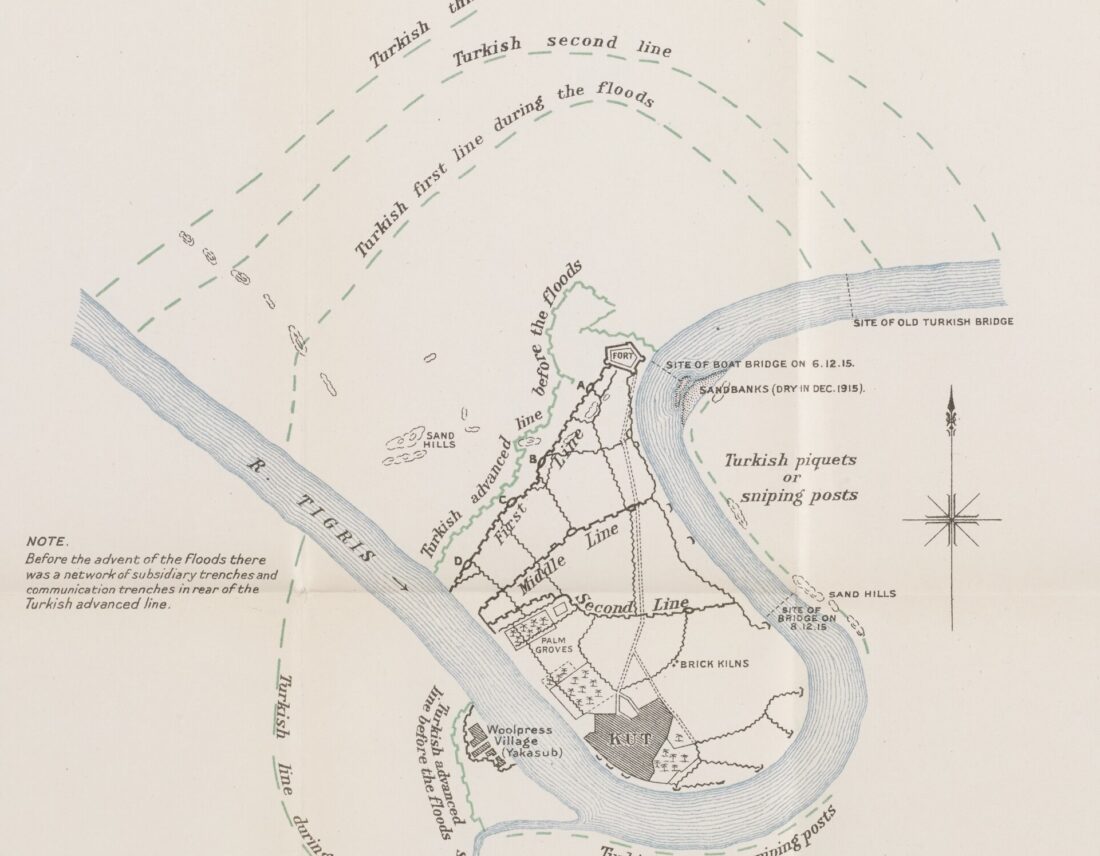The clash continues
Even after terrible losses, the Gurkha and Punjabi soldiers continued to play a vital role in the battle. On 23 November, they clung onto a small hillock through a day of brutal shelling. From 7pm that evening, the Turkish 35th Division mounted continual attacks against the massively outnumbered Gurkhas and Punjabis but were repeatedly driven back with heavy casualties.
After a night of heavy fighting the Turkish withdrew at 4am, with Sandes grimly noting that the surrounding ground was littered with dead and wounded. The little hillock the Gurkhas defended was later christened the ‘Gurkha Mound’ in honour of the 2/7th’s bravery in defending it. But despite this remarkable stand, the battle situation elsewhere began to disintegrate once the Ottomans were able to reinforce.
On 24 November, the depleted 6th Division began to withdraw back to Kut, and the battle ended inconclusively. The British had suffered over 4000 casualties. Per the regimental history, the three days of fighting cost the 2/7th GR 4 officers and 58 men killed, with another 194 wounded, effectively a third of the battalions effective strength.
The following days saw the Division make a gruelling 80-mile march through the scorching desert, harassed along the way by enemy forces. Even after the losses at Ctesiphon, the Division was able to make a successful rearguard action Umm-al-Tabul, beating back 12,000 Ottoman attackers.
The survivors finally marched into Kut on 3 December 1915. The Ottomans were close behind.
Photograph below – The arch viewed from the rear. The rise on the right-hand side is Gurkha Mound. Source; History of the 7th Duke of Edinburgh’s Own


